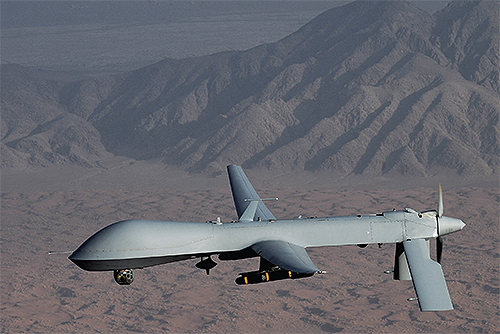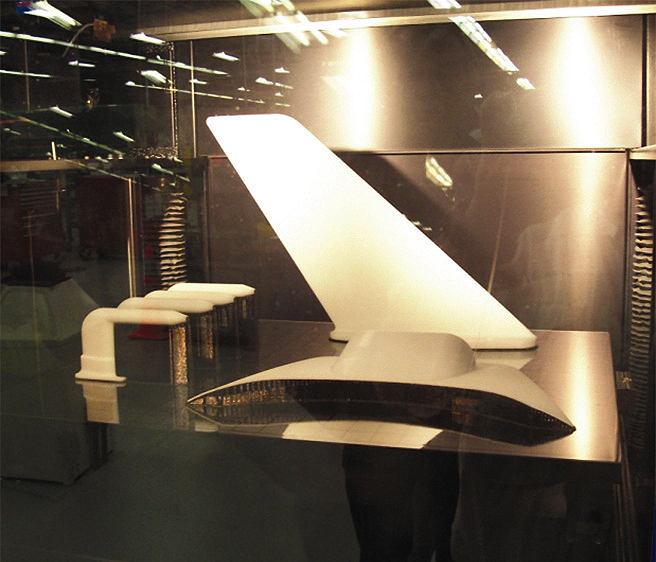Based at Sheppard Air Force Base, Wichita Falls, Tex., the Trainer Development Flight (TDF) is a facility that designs, develops, and manufactures trainers and training aids for the Air Force and all branches of the Department of Defense (DoD) as required. These items are used in numerous training environments, including avionics, weapons and fuel systems, medical readiness, HVAC, and telecommunications systems.
The trainers and training aids may be either original products or replicas of existing ones, depending on the need. Some devices are not required to be working units, so it usually isn’t cost-efficient to purchase the actual item. For most training applications, it’s more economical to train students on replicas, instead of the often extremely expensive equipment.

For the Department of Defense, the TDF designs and builds “trainers” and “training aids” such as UAV replicas to train students.
To make the replicas, the TDF often uses direct digital manufacturing. It employs four fused deposition modeling (FDM) additive fabrication machines in a central location with AFSO 21 (Lean) processes incorporated into the overall process.
“Because most of our projects are either one-of-a-kind or very low volume, conventional methods are very expensive,” said Mitchell Weatherly, Chief of the TDF. “Only about 10 percent of our work is for prototyping, and 90 percent is prod-uction. With FDM, the investment is up front, not ongoing. Plus, the process is environmentally safe and 100% ‘green’ with zero waste.”

Antenna and other components being manufactured by a Fortus FDM machine.
The TDF designed and manu-factured an exact replica of an unmanned aerial vehicle (UAV) or “drone” for training repair technicians. Many of the internal and external components were built on the FDM machines. These components included most of the body as well as several cowlings, propellers, and antennas. They also purchased a number of real UAV components from the OEM.
For the production of the UAV’s large antenna alone, the FDM machines did the job in about one-tenth the time it would normally have taken with conventional methods, and it delivered an ROI of over $12,000.
The savings go beyond time, though. For the antenna, it would have taken an outsourced machine shop up to 20 days to produce the part, where it took only two days using FDM — but only 15 to 20 minutes of labor. For the entire UAV project, total time saved was more than three years in some areas. Total savings on this project, and others over the last four years, is $800,000.

With direct digital manufacturing, the TDF can produce batches of components.
“Major advantages to the FDM system include its speed over other processes or alternative build methods, the versatility of FDM versus injection molding, and the ability to run multiple parts simultaneously through the system,” said Weatherly.
“Additional capabilities include the ability to design based on function needs instead of manufacturing constraints, and the ability to implement design changes immediately and at minimal costs,” continued Weatherly. “The versatility to manufacture any item coupled with zero hazardous waste is one of the greatest advantages to the Air Force. The FDM-based machines have been used for a number of trainer projects, which have tight budgets. We have also used the FDM process for research and development for our airmen and soldiers to be able to train like we fight.
“For our first FDM machine purchase, we projected ROI in 4 years, but it took only 18 months,” Weatherly said. “For our second FDM machine purchase we saw ROI in only 9 months. You will never get away from conventional methods and highly skilled technicians, but you can give them the proper tools and new technology that can make their job easier and competitive. Since 2004, when we purchased our first of four machines, the FDM process has saved the government over $3.8 million to date with an expected 10-to-15-year savings of over $15 million.“
Fortus 3D Production Systems,Stratasys Inc.
www.fortus.com
Filed Under: Aerospace + defense, Digital manufacturing, Software • simulation, ENGINEERING SOFTWARE





Tell Us What You Think!